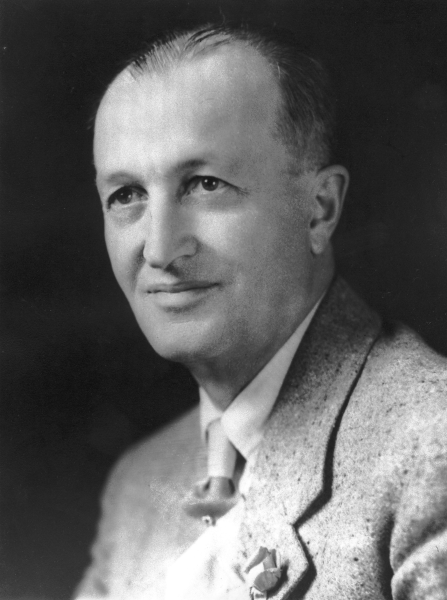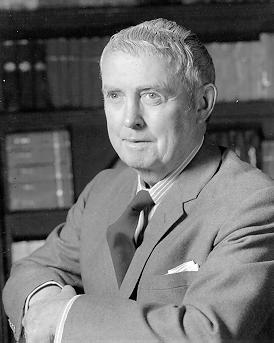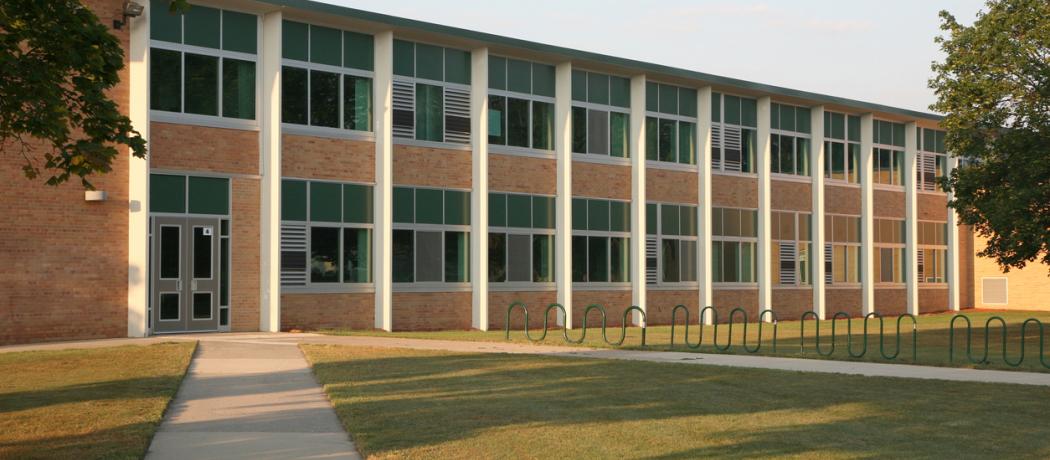There are 60 school districts in BC, with 1578 public and 364 independent (some private) schools, filled with about 555 000 students. I set out to learn which of these schools are named after a physician and, with a great deal of help from librarians at the BC College of Physicians and Surgeons, I tracked down eight schools in BC named after a medical doctor to honor their memory and inspire students and staff. We may have missed some schools because, as in the case of Carson Graham Secondary School in North Vancouver, the Dr appellation may not be included in the name. Schools named after an honorary doctor rather than a medical doctor are not included in this list.
Dr Roberta Bondar Elementary School, Abbotsford
 [photo credit: public domain]
[photo credit: public domain]
The school’s motto, “beyond the horizon,” honors Dr Bondar (1945–), Canada’s first female astronaut and the world’s first neurologist in space. While growing up in Sault Ste. Marie, Ontario, she dreamed of becoming an astronaut. To achieve her goal she pursued an extensive education—bachelor’s degree in zoology and agriculture, master’s degree in experimental pathology, PhD in neuroscience, and an MD with further FRCPC and FRCSC qualifications. Dr Bondar also became qualified in skydiving, underwater diving, and piloting private airplanes. She began her astronaut training in 1984 and in 1992 she spent 8 days on the space station studying the effects of low gravity on the human body. When she returned to Earth she led a research team at NASA studying the effects of exposure to space on humans. In retirement she became a highly regarded photographer. She is the recipient of many tributes, awards, and honors, which include seven other schools displaying her name.
Dr Thomas A. Swift Elementary School, Abbotsford
 [photo credit: Can Med Assoc J. 1927 Dec; 17(12): 1565]
[photo credit: Can Med Assoc J. 1927 Dec; 17(12): 1565]
Dr Swift (1880–1927) lived by what became the school’s motto: “respect, trust, integrity, communication, teamwork.” He was born in Granby, Quebec, and obtained his MD at McGill University in 1906. He moved to Abbotsford to open his medical practice in 1908. Dr Swift attended to patients in all categories of weather and often over very primitive roads. He established the first hospital in Abbotsford in his house on Hazel Street. It had no plumbing or running water. The upstairs was turned into a maternity and surgical ward. A nurse/midwife was the first matron and another woman was in charge of housekeeping. In 1922 he pressured the local council to fund a real hospital, which resulted in the 14-bed Cottage Hospital. Dr Swift died at age 47. According to his obituary he suffered what was then thought to be repeat attacks of influenza. He typified all that was best in general practice, and he always found time to keep abreast of progress in medicine and surgery. His obituary says, “He loved humanity and in its service he wore his life away.”
Dr Kearney Middle School, Fort St. John
[no photo available]
The school’s mission statement challenges community members to become responsible citizens capable of adapting to and changing the world. Dr Garnet Kearney (1884–1971) adapted to the changing world over the 30 years he spent serving his community in the Peace River North area, retiring at age 80. Dr Kearney was born in Renfrew, Ontario. While searching for his calling he tried teaching in Ontario, harvesting crops in the Prairies, hard-rock mining in the Kootenays, and working in railroad construction on river barges and in logging camps. He was 30 years old when he enrolled at McGill University and became a doctor. During the First World War he was a ship’s doctor on troop ships, crossing the Atlantic some 18 times. After the war he set up his general practice in southern BC, primarily focusing on the Oliver and Nakusp areas. In 1935 he moved to the Peace River North area and settled in Fort St. John. Traveling with a horse and small carriage, and in the wintertime on an improvised snowmobile, he made house calls to remote areas. He accepted home cooking as payment and often forgot to bill for his services. He moved to Vancouver after retiring and died at age 88.
École Dr Knox Middle School, Kelowna
 [photo credit: Doctors of BC archives]
[photo credit: Doctors of BC archives]
The school was named after Dr William John Knox (1878–1967) to honor him for his work for the betterment of student health and in recognition of his contributions to the community. Dr Knox was born in Northeastern Ontario, the second of eight children. He studied medicine at Queen’s University, Kingston. After graduation he moved to Vancouver, hoping to fill a position for a ship’s doctor on the Empress of China. While waiting for the ship to arrive he took a 6-month locum tenens for Dr Boyce in Kelowna. In 1904, tired of waiting for his ship to arrive, he decided to stay in Kelowna, and stay there he did, for the next 63 years. Kelowna in the early 1900s was an outpost. Hospital facilities were primitive and much of the medical work centered around house calls on horseback or by rowboat to small settlements along Okanagan Lake. Dr Knox operated on dining room tables, pulled teeth, and delivered babies in his patients’ homes. In 1906 he was elected to the local school board, and in 1912 he was appointed medical inspector for schools. In 1932 he was elected president of the then BCMA (now Doctors of BC). Dr Knox practised medicine in Kelowna for 60 years, until he had a stroke. He died in 1967.
Dr R.E. McKechnie Elementary School, Vancouver
 [photo credit: Doctors of BC archives]
[photo credit: Doctors of BC archives]
The school bears the name of Dr Robert Edward McKechnie (1861–1944) to honor his services and achievements in medical practice, medical organizations, and university and government services. The school was opened in 1957.
Dr McKechnie was born in Brockville, Ontario, and received his medical degree from McGill University at age 29. He came to BC in 1891 and practised medicine in the Nanaimo area for 10 years. While there he was elected to the council of the BC College of Physicians and Surgeons. He became the president of the council in 1897. In 1898 he served as a minister without portfolio in the provincial government. In 1899 he was the first president of the then BCMA (now Doctors of BC). In 1904 he moved to Vancouver and held the position of senior surgeon at Vancouver General Hospital and over the years he became life governor of the hospital. In 1906 and 1910 he was again the president of the BC College of Physicians and Surgeons and then the first president of the Canadian Medical Association in 1914, re-elected in 1920. He played an important role in founding UBC and in 1912 was elected to the university’s senate. He became chancellor of the university from 1918–1944. In his spare time he wrote medical articles and published a book about the history of medicine on the Northwest Coast. He also commissioned a challenge cup for the BC Rugby Championship team. Not surprisingly Dr McKechnie received several accolades for his services to Canada and was made commander of the Order of the British Empire.
Dr F.D. Sinclair Elementary School, Surrey
[photo credit: Dr F.D. Sinclair, [193-]. Photo courtesy of the Surrey Archives, 170S30]
The school opened in 1956 honoring Dr Fred Douglas Sinclair (1884–1951), Surrey’s pioneer medical health officer. Born in St. Stephen, New Brunswick, Dr Sinclair attended Dalhousie and McGill Universities. He opened his medical practice in Cloverdale in 1911 and 2 years later was also appointed medical health officer for Surrey. During the First World War he served overseas and returned to his practice in 1919. In 1920 he was the charter president of the Great War Veterans’ Association and helped found the Canadian Legion there. He was instrumental in establishing the Victorian Order of Nurses in Surrey and the St. John Ambulance Brigade. At least once a year, Dr Sinclair visited the school that would later bear his name. It is reported that he was always available for medical calls, tirelessly working under stress in very poor facilities. He never sent a bill; he maintained that “if someone could pay, they would.” In 1947 he initiated fundraising for a hospital facility in Surrey. He died at age 67, and as a tribute to his memory, many Cloverdale stores and businesses were closed for a time on the day of his funeral.
Dr D.A. Perley Elementary School, Grand Forks
 [photo credit: Boundary Museum Society Archives]
[photo credit: Boundary Museum Society Archives]
In 1972, Central Elementary School in Grand Forks was renamed the Dr D.A. Perley Elementary School. Dr Perley was born in 1914 in Fernie, BC. He grew up in the Kootenays, obtained his BSc degree from UBC, and graduated with an MD degree from the University of Alberta in 1939. During the Second World War he served in the Air Force, assigned to the costal command near Portsmouth, England. After the war he moved his family to Grand Forks, where he was rarely seen without his black medical bag for the next 44 years. One friend described him as “a real family doctor as people would like to think of a family doctor.” Over the years he delivered an estimated 2000 babies. Beyond his medical work he was a social activist, a patron of education, and an enthusiastic curler. He served 18 years on the Grand Forks School Board, 15 years as chairman. He presided over the Grand Forks Board of Trade and the West Kootenay Medical Association and he was a founding member of Selkirk College. In 1989 he was named Grand Forks’ Citizen of the Year. He died that same year. His obituary in the local newspaper read, “He touched the lives of everyone in the community.” A Dr D.A. Perley Memorial Scholarship fund has been established in his memory.
Carson Graham Secondary School, North Vancouver
 [photo credit: North Vancouver Museum and Archives #7854]
[photo credit: North Vancouver Museum and Archives #7854]
Every time I drive past this school my heart skips a beat. I knew Dr Graham since 1954, when I was a student intern at the old North Vancouver General Hospital, the forerunner of today’s Lions Gate Hospital. He was chief of the medical staff and welcomed me back in 1956 as the 18th doctor on the North Shore of Vancouver. On 14 July 1959 he suffered a massive heart attack at his home. I was called to attend him, and he died in my arms. He was 60 years old. A graduate of McGill University, he moved from Ottawa to North Vancouver in 1924. He was the third or fourth doctor here. With a bit of a gruff mannerism he was a softy. His patients loved him. He was a major force in planning Lions Gate Hospital. He was a member of the North Vancouver Board of Education and the North Vancouver Board of Trade, director of the Seamen’s Institute, doctor to the police, and ship’s doctor on the North Shore. Carson Graham Secondary School was named for him as a tribute to his contributions to the North Vancouver community.
The list of honored doctors is sure to continue to grow. The names of schools, hospitals, and other public institutions reflect the legacies of individuals we have chosen to emulate.
—George Szasz, CM, MD
This post has not been peer reviewed by the BCMJ Editorial Board.


